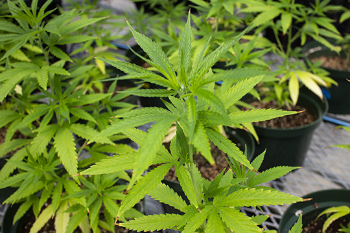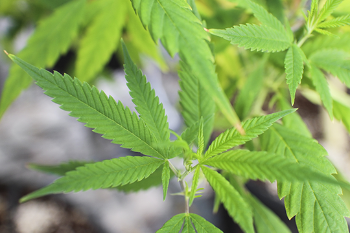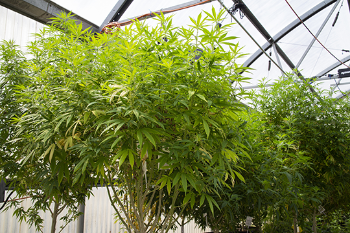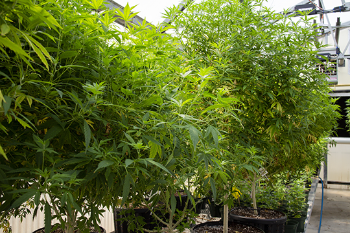Hemp Frequently Asked Questions
Note: These answers are current as of 19 July 2022.
For updates, please subscribe to our newsletter. For questions and comments, email hemp@ifas.ufl.edu.
Hemp is knowledge and production methods continue to evolve in Florida and beyond, and it may seem that there are more questions than clear answers. The following list of frequently asked questions (FAQ) attempts to provide the most accurate answers currently available from the UF/IFAS Hemp Research & Extension Program.
Quick Find
Hemp in Florida
- Is Hemp Legal to Grow on Private Farms in Florida?
- Is CBD and Other Cannabinoids Legal in Florida?
- When Can Private Citizens or Businesses Grow Hemp in Florida?
- How Do I Get a Hemp Permit?
General Hemp Questions
UF/IFAS Industrial Hemp Program
- Does UF/IFAS Profit from Growing Hemp in Research Studies?
- Why is UF/IFAS Researching Hemp?
- Will the Invasive Risk Study Affect Hemp Production?
- Will Research Be Expanded with Additional Funding?
- Will UF/IFAS be Approving Hemp seed Cultivars a allowed by State Statute?
Other Important Clarifications
- Will There Be Insects or Diseases in the Hemp?
- Is this the Same Hemp Grown Before World War Two?
- How is it Legal to Grow Sunn Hemp Without a Permit?
Definitions
Hemp in Florida
Is Hemp Legal to Grow on Private Farms in Florida?
Yes, a 2019 Florida law authorized hemp commercialization regulated by the Florida Department of Agriculture and Consumer Services (FDACS). The state hemp program was initiated in 2020, including the release of cultivation licenses. The application for a hemp cultivation license can be found at https://www.fdacs.gov/Cannabis-Hemp/Hemp-CBD-in-Florida/Hemp-Cultivation-Licensing. This FDACS Frequently Asked Questions page includes helpful information on the hemp cultivation program: https://www.fdacs.gov/content/download/91830/file/hemp-cultivation-application-faq.pdf.

Close-up view of the leaves of container grown industrial hemp plants in a greenhouse | UF/IFAS photo
Is CBD and Other Cannabinoids Legal in Florida?
CBD and certain other cannabinoid products began being regulated in the state by the Florida Department of Agriculture and Consumer Services (FDACS) on July 1, 2019 and are required to meet strict guidelines for content as per state law and recently released FDACS rules. More information about CBD can be found on the FDACS website.
Since When Could Private Citizens or Businesses Grow Hemp in Florida?
The United States Department of Agriculture (USDA) Hemp Program was initiated in a response to the Agricultural Improvement Act of 2018 more commonly known as the ‘2018 Farm Bill’ and released their Interim Final Rule for Domestic Hemp Production on October 31, 2019. The final rule for the Domestic Production of Hemp (Final Rule”) was released by USDA on January 15, 2021 and went into effect on March 22, 2021. Hemp remains a regulated agricultural industry at both the national and state levels through each state’s Department of Agriculture. The State of Florida and the Florida Department of Agriculture and Consumer Services (FDACS) completed their rules and regulations to allow for the commercial cultivation of hemp in 2020. Information about grower permits and other valuable information can be found here.
How Do I Get a Hemp Cultivation Permit?
You can apply for a hemp cultivation permit with the Florida Department of Agriculture and Consumer Services (FDACS) at the State of Florida Hemp Program website: https://www.fdacs.gov/Cannabis-Hemp/Hemp-CBD-in-Florida. Follow the Hemp Program 2020 Applicant Checklist just to make sure that you are applying for your permit properly.
General Hemp Questions
How is Hemp Different from Marijuana?
Hemp and marijuana are the same plant species: Cannabis sativa. They are legally distinguished based on their total delta-9-Tetrahydrocannabinol (THC) content. Total THC includes delta-9-THC and the precursor THCa, the psychoactive compounds associated with ‘getting high.’
Hemp is Cannabis sativa with a total THC content that does not exceed 0.3 percent by dry weight, while marijuana is Cannabis sativa with a total THC (THC + THCa) content greater than 0.3 percent by dry weight, while marijuana is Cannabis sativa with a total THC content greater than 0.3 percent. The 0.3 percent total THC threshold is defined by state and federal laws.
Hemp is used for fiber, seed, oil, non-THC cannabinoids, and various other derivatives. Some hemp varieties can be high in cannabidiol (CBD) and other cannabinoids. Hemp and marijuana may also be called Cannabis indica or Cannabis ruderalis, which are biologically-synonymous terms for Cannabis sativa. More accurately, indica and ruderalis denote subspecies.
What is CBD?
CBD is the abbreviation for cannabidiol. CBD is one of over 100 cannabinoid compounds found in Cannabis plants. Some hemp and marijuana have a high concentration of CBD. CBD has growing evidence of medical use.
What Did the 2018 Farm Bill Change for Hemp?
The 2018 Farm Bill defines hemp as an agricultural commodity. It also re-classifies hemp with regard to the Controlled Substances Act administered by the United States Drug Enforcement Administration (DEA). This change will now offer hemp growers access to financing and crop insurance and removes trade barriers across state lines. The 2018 Farm Bill also describes the regulation of hemp production at the state level. The department of agriculture for any state interested in allowing the cultivation of hemp may submit its plan to the USDA once approval is obtained from the state’s legislature. The Florida Department of Agriculture and Consumer Services (FDACS) has drafted a state hemp plan to USDA on April 8, 2020, and received approval on April 16, 2020.
USDA has also responded to the 2018 Farm Bill by publishing their interim final rule for domestic hemp production in the Fall of 2019. Each state will now operate under the laws and regulations put in place by the 2018 Farm Bill process.
UF/IFAS Hemp Research & Extension Program
Does UF/IFAS Profit from Growing Hemp in Research Studies?
No - the vast majority of all hemp plant material is destroyed after completion of UF/IFAS research trials. The UF/IFAS Hemp Research & Extension Program continually seeks to partner with industry and others for quality testing and product development, however much of this material or products will also be destroyed. The overall goal of the UF/IFAS Hemp Research & Extension Program is to generate and disseminate research-based information openly for the benefit of all stakeholders in Florida and beyond.
Why is UF/IFAS Researching Hemp?
The UF/IFAS Hemp Research & Extension Program contines the work to identify varieties and production recommendations that can be used by growers and are also environmentally responsible. Florida's subtropical climate and markets are very different from other places currently growing and selling hemp. Although most hemp seed and plant materials on the market are adapted to those other places, UF/IFAS had to begin research with varietal and cultivar trials to identify existing hemp genetics that will grow well in Florida’s diverse soils, climates, and latitudes.
Economic analysis has been conducted to better understand input and other costs for growing hemp, expectations of hemp’s market value, and possible breakeven points for grain, fiber, dual purpose, and cannabidiol (CBD) hemp. Additionally, UF/IFAS was mandated to conduct studies to better understand the risk of hemp invasiveness or escape from cultivation. The initial 2019-2021 UF/IFAS research plan is further described throughout the site. The UF/IFAS Hemp Research & Extension Program (known at that time as the UF/IFAS Hemp Pilot Project) planted its first field-level study back in May 2019.
Will the Invasive Risk Study Affect Hemp Production?
Invasions of non-native plant species are a significant ecological and economic problem in Florida. Invasive plants affect biodiversity and ecosystem function. Each year, the state of Florida spends millions on invasive plant management.
To reduce the threat of non-native plant invasions, the UF/IFAS Assessment of Non-native Plants in Florida’s Natural Areas conducts risk assessment of non-native plant species new to the state of Florida, or proposed for new uses. Data for the risk assessments come from published information related to the biology and ecology of individual species.
Hemp was last assessed in 2014 and at that time, scored in the 'high invasion risk' category because of what’s known about its ability in other states and countries to escape and colonize natural areas outside of cultivation.
It is unlikely this assessment will change in the future, but the status of hemp is being closely monitored. The FDACS hemp permit is designed within the Non-native Species planting permits and requires an Environmental Containment Plan.
2017 Florida state statute directed the UF/IFAS Industrial Hemp Pilot Project (now known as the UF/IFAS Hemp Research & Extension Program) to better understand how hemp grows and might persist in the unique climate of Florida with limited and strictly monitored plantings. Initial UF/IFAS Pilot Project in no way delayed the pathway to commercial hemp production in Florida, but invasion risk is a concern that must be addressed. Ongoing invasive studies at UF/IFAS will continue to address the hugely impactful problem of plant invasions in the state. Such work will further assess the potential invasion of hemp into natural areas and inform best management practices for hemp cultivation and seed transportation to reduce invasion risk.
Will Research Be Expanded with Additional Funding?
Yes – the UF/IFAS Hemp Research & Extension Program is working to sustain existing research and education programs and expand our efforts. The UF/IFAS Hemp Research & Extension Program continues to seek federal, state, and industry funding to further advance and communicate hemp science in Florida. Such funding will help continue research established during the initial 2019-2021 pilot project period and expand the program to new areas such as breeding, plant propagation, indoor production, and management practices for environmental protection.
Will UF/IFAS Be Approving Hemp Cultivars As Allowed By State Statute?
In 2020, UF/IFAS administrative leadership did approve a fee-based pilot project-approval process for hemp plant propagator businesses in Florida and across the country. UF/IFAS is commenced with approving hemp genetics as propagules (known statutorily as ‘cultivars’) according to state statute and FDACS guidelines. Approval of hemp hemp seed varieties was not a part of the UF/IFAS Hemp Cultivar Approval Program. This 2020-2021 UF/IFAS Pilot Project Approval Program did offer hemp growers in Florida more science based and credible hemp cultivar options through approved propagules, especially for the CBD/cannabinoid production sector. Hemp genetics that were entered into the UF/IFAS Cultivar Approval Program did provide information critical to evaluate the genetics more favorable for growing in Florida. Because of a lack of consistent cultivar entries for testing, the UF/IFAS Hemp Cultivar Approval Program was paused in early 2022.
Other Important Clarifications

Close-up view to show detail of the leaves of industrial hemp plants grown in a greenhouse | UF/IFAS video still
Will There Be Insects or Diseases in the Hemp?
Definitely - UF/IFAS has observed a number of pest species affecting early studies, both in the field and in controlled growth environments (e.g. greenhouse and growth rooms). UF/IFAS will continue to assess hemp stands for health, including for insect pests and diseases, and is presently looking at certain control measures. Certain UF/IFAS Hemp Research & Extesnion Program faculty are also involved in multi-state research efforts with other universities that could facilitate the registration of crop protection products for hemp.
Is this the Same Hemp Grown Before World War Two?
The hemp market up to the 1940s was oriented around an exceptional demand for fiber to supply the United States and allies with cordage and durable canvases. Information about varieties grown then for fiber in that economy is not readily transferrable to the contemporary market for oil, seed, cannabinoids, and specialty fiber today.
From those historical records, there is only evidence of a single research program for cultivation of hemp in Florida during that time. In fact, a bulletin of that research program in the Everglades region suggests that no hemp had ever been cultivated in Florida for commercial purposes. UF/IFAS has yet to find a reference to commercial or production scale planting of hemp in Florida.
How is it Legal to Grow Sunn Hemp Without a Permit?
Sunn hemp (Crotalaria juncea) is not actually hemp or even related or unrelated to Cannabis. This cover crop was used in India as a source of fiber, so it has 'hemp' in its common name. It is in the legume family with alfalfa. Sunn hemp has no cannabinoids.
Definitions of Common Hemp Terminology
Autoflowering
When a plant flowers as it reaches a certain size or age instead of being daylength sensitive - also, day neutral or daylight independent. Some hemp are autoflowering.
Bast
The long, high-quality fiber that run lengthwise on the exterior of a hemp stem

Industrial hemp plants grown in a controlled greenhouse environment | UF/IFAS video still
Cannabinoids
A class of more than 100 naturally-occurring secondary metabolites found in Cannabis (and some other plants) synthesized from the same Olivetolic acid and GPP. Some cannabinoids, such as THC, are associated with psychotropic and medicinal effects.
Cannabis
Botanically, Cannabis is a genus. Although there are multiple distinct genetic backgrounds of Cannabis (sativaindicaruderalis, and similar), most botanists classify those backgrounds into the same species: Cannabis sativa L. Conversationally, 'cannabis' is an accurate common name for marijuana and hemp, just as corn (Zea mays) refers to sweetcorn, popcorn, and field corn.
CBD
Cannabidiol is a cannabinoid that has some medical purposes. Some hemp and marijuana have a high concentration of CBD.
Decorticate
The process of stripping bast fiber from stems
Dioecious
When individuals in a plant population are strictly male or female, that is each plant has only pollen producing flowers or seed producing flowers. Most populations of cannabis are dioecious.
Hemp seed oil
The vegetable oil extracted from the seeds of a hemp plant. This is distinguished from hemp essential oil (or CBD) oil that is extracted from flowers.
Hermaphrodite
Having both male and female reproductive organs in the same flower. Hermaphrodite flowers can produce both pollen and seed. Most plant species have only hermaphrodite flowers. Hermaphrodite flowers occasionally can be found on otherwise female cannabis.

Industrial hemp plants grown in a controlled greenhouse environment | UF/IFAS video still
Hurd
The woody, central pith section of hemp stem used in Hempcrete, animal bedding, and other alternatives to wood pulp
Indica
Cannabis indica or Cannabis sativa var. indica refers to a genetic background of cannabis that had been crossed into marijuana.
Monoecious
When individual plants have separate male and female unisexual flowers in the same plant. These plants still have unisexual flowers, but of both sexes separately in the same individual plant. For example, corn tassels are male and corn ears are female. Some hemp varieties are monoecious.
Photoperiod
The hours of sunlight in a day required for the plant to grow in leafy, vegetative phase (not flowering). After seasonal day-lengths change from the required photoperiod, the plants will flower. Plants have photoperiodic flowering to stop them from flowering before they are ready. Most hemp varieties require more than 14 hours of light per day. They then flower after summer when the days get shorter.
Ruderalis
Cannabis ruderalis or Cannabis sativa var. ruderalis refers to a low THC genetic background of cannabis that is attributed to autoflowering and dwarfing.
Sativa
Cannabis sativa or Cannabis sativa var. sativa refers to a genetic background of cannabis that is most associated with hemp and marijuana.
THC
Tetrahydrocannabinol is a cannabinoid most associated with the psychotropic 'high' effect of marijuana.
